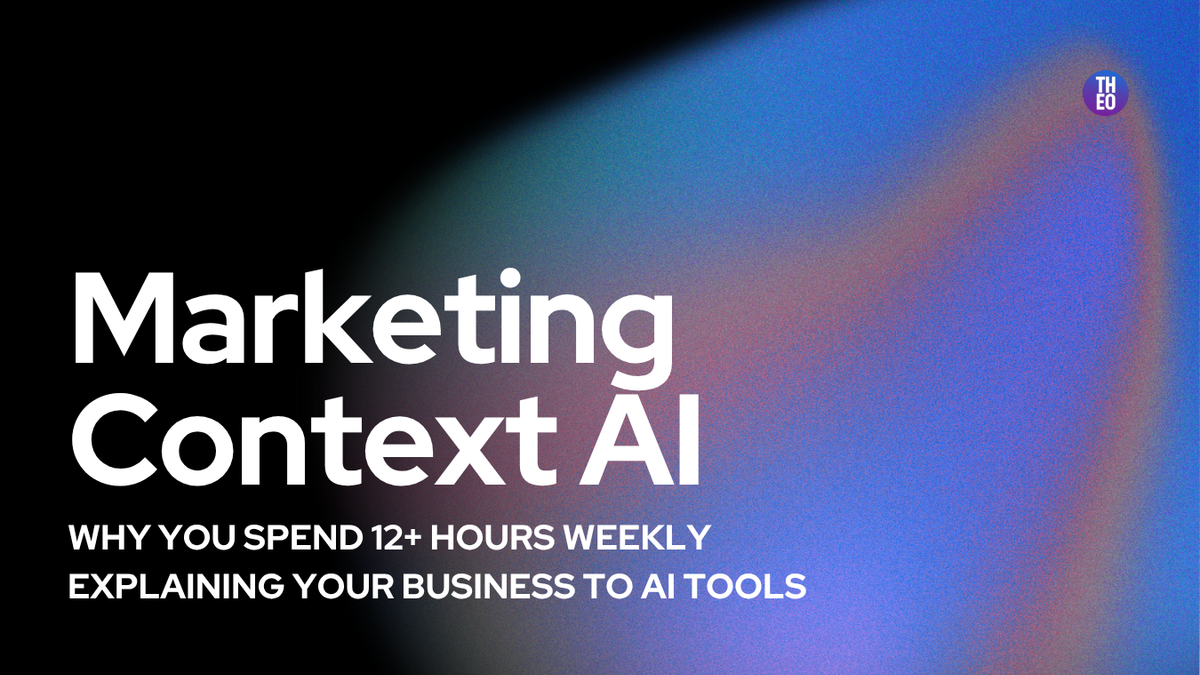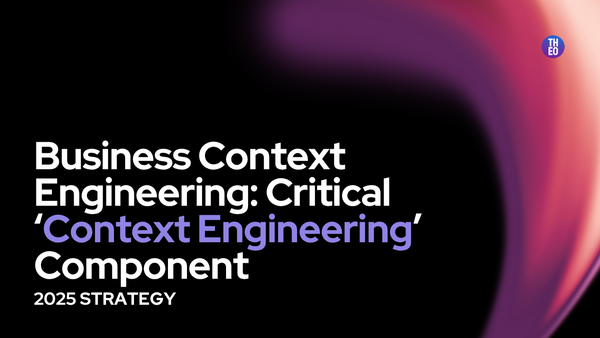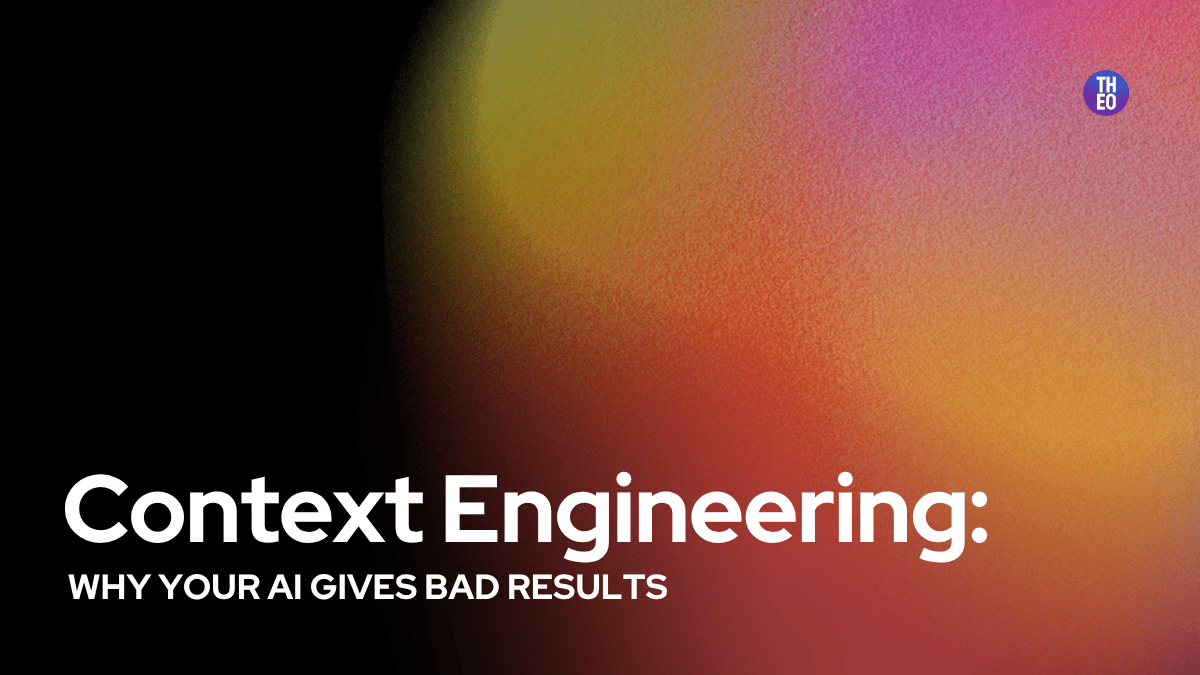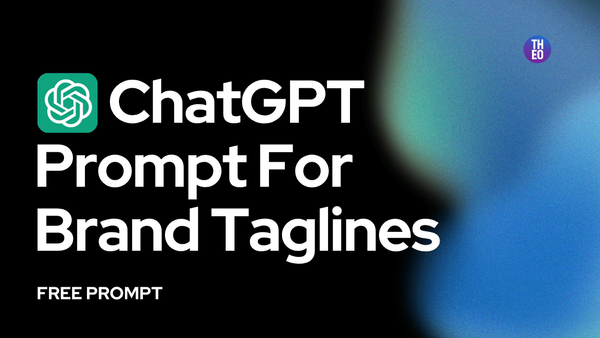Marketing Context AI: Why You Spend 12+ Hours Weekly Explaining Your Business to AI Tools

The Marketing AI Disconnect
You've spent hours carefully explaining your brand voice, product details, and target audience to your AI assistant. You hit generate, and what comes back? Generic, off-brand content that sounds nothing like your company. Another 10 iterations later, you're still not there. Sound familiar?
For overwhelmed marketers juggling multiple products, audiences, and campaigns, this constant context management has become a 12+ hour weekly burden. The problem isn't your prompt skills – it's that your AI lacks the proper marketing context.
Why Marketing AI Fails Without Context
Standard AI tools operate in isolation. Every conversation is a fresh start, with the AI having little to no memory of your:
- Brand voice and personality
- Product specifications and differentiators
- Target audience segments and their unique needs
- Previous marketing campaigns and their performance
- Industry-specific terminology and compliance requirements
This leads to what we call the AI Productivity Death Spiral:
- You explain your business context
- AI creates generic output
- You revise and explain more context
- AI improves slightly
- You switch to another task
- Return later and repeat the entire process
For marketers managing multiple product lines or audiences, this becomes exponentially worse, as the AI frequently mixes contexts inappropriately – describing your enterprise product in language meant for consumers, or applying your software messaging to your consulting services.
What Is Marketing Context AI?
Marketing Context AI refers to artificial intelligence systems that understand, maintain, and utilize your specific business information across marketing functions. Unlike generic AI tools, context-aware marketing AI maintains a comprehensive understanding of your:
- Brand identity and voice
- Product lines and their positioning
- Audience segments and their needs
- Marketing channels and their requirements
- Seasonal campaigns and their timing
As HubSpot notes in their research on AI-powered marketing, "providing complete customer context is essential to AI delivering on its full promise." This context layer is what transforms generic AI outputs into business-specific, brand-aligned marketing content.
The Business Impact of Context-Aware AI
Organizations implementing proper marketing context AI see dramatic improvements:
- Time Savings: Eliminate 12+ hours weekly spent on repetitive context explanations
- Quality Improvement: Reduce iterations by 70% through consistent, business-aware outputs
- Strategic Focus: Shift from tactical coordination to strategic planning
- Multi-Product Management: Maintain clean separation between product lines and audience segments
According to industry research, companies using context-aware AI for marketing experience 5-10x productivity improvements while maintaining brand consistency across channels.
The Marketing Context Framework: A Practical Solution
Here's a practical framework you can implement today to bring context to your marketing AI:
The 5C Marketing Context Matrix
| Context Layer | Key Elements | Documentation Format |
|---|---|---|
| Company | Mission, values, brand voice, tone | Brand guidelines document |
| Customers | Personas, pain points, journey stages | Customer profile sheets |
| Competition | Differentiators, positioning, alternatives | Competitive analysis brief |
| Content | Messaging frameworks, campaign themes | Message map document |
| Channels | Platform requirements, audience behavior | Channel strategy document |
Implementation Steps:
1. Context Documentation
- Create concise documents for each of the 5Cs (1-2 pages each)
- Focus on specific details and examples, not generic descriptions
- Include actual language samples demonstrating voice and tone
2. AI Integration
- Establish a consistent prompting pattern that incorporates context
- Reference specific context documents at the beginning of each conversation
- Maintain separate AI conversations for different product lines or audiences
3. Context Refinement
- Update your context documents as messaging evolves
- Add successful AI outputs to your examples library
- Document common misunderstandings and their corrections
Context Prompt Template:
Here's our key context:
BRAND VOICE: [PASTE BRAND VOICE SUMMARY]
PRODUCT DETAILS: [PASTE PRODUCT SUMMARY]
TARGET AUDIENCE: [PASTE AUDIENCE SUMMARY]
COMPETITIVE POSITIONING: [PASTE DIFFERENTIATORS]
CHANNEL REQUIREMENTS: [PASTE CHANNEL CONSTRAINTS]
The specific content needed is: [DESCRIBE TASK]
The Systematic Approach to Marketing Context AI
While the 5C framework helps, overwhelmed marketers need a more systematic solution. The challenge isn't just documenting context – it's organizing it for AI consumption across all marketing functions.
Here's the thing about marketing context: it works exponentially better when properly structured. When your business context is systematically organized, you can seamlessly switch between product lines, audience segments, and campaign types without the constant context management overhead.
Instead of spending 12+ hours weekly explaining your business to AI, you could be focusing on strategic initiatives that drive growth. That's where THEO comes in – transforming scattered business documents into an AI-optimized knowledge base in just 2 minutes.
By consolidating your business information into one AI-ready file, THEO enables any AI assistant to instantly understand your brand voice, product details, and audience segments – delivering spot-on marketing outputs from day one.
Next Steps: Making Your AI Truly Understand Your Business
Ready to eliminate the AI context management burden? Take these steps today:
- Fill out the Marketing AI Context Readiness assessment to evaluate your current situation
- Implement the 5C Marketing Context Matrix for immediate improvements
- Document your brand voice, products, and audiences using the template above
- Consider how a systematic context organization approach could save you 12+ hours weekly
What would you do with an extra 12 hours every week? How would your marketing strategy evolve if you could focus on strategic initiatives instead of repetitive AI training?
Transform your marketing AI experience from frustration to productivity by giving your AI the context it needs to truly understand your business.
💡 Wait, what if this sprint process was just the tip of the iceberg? What if you could skip all manual work and get an AI that automatically captures your complete business DNA, then creates system instructions so sophisticated your assistant becomes 10x more strategically intelligent - with just a 2-minute setup?
See how → or get weekly AI marketing tips that actually work for small businesses.





